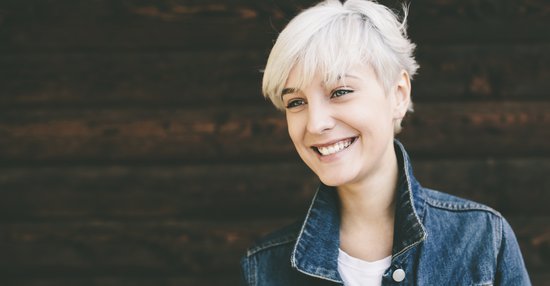It’s funny – as I sit here about to blog on my ‘expertise’ with hats and scarves, I find myself wearing a knitted tuque aptly placed on my head. I do not know which came first: my love affair with hats or the loss of hair, which led me to my love affair of hats. Whichever it is, I still find myself wearing hats and head coverings A LOT. And I love it! Today, I wear them out of personal freedom and choice but wearing hats during my treatment is forever a memory etched on my heart. Having ‘c’ made it less of an option and more of a necessity for me to wear hats, but I enjoyed the look and the way they warmly protected my head.

Now let’s get back to the beginning. Let’s say you’ve just been diagnosed and are thinking of covering your head with SOMETHING. As you proceed with your own cancer treatment, you will discover there are various options for your head covering: hats, scarves and wigs (natural and synthetic). Having so many choices gives us each more control as we move through our personal journeys. You will find that having a head covering, such as a scarf or hat, gives such a nice, quick pick-me-up and you will feel better about yourself and your outward appearance. I mainly wore hats through my entire chemotherapy and radiation sessions. I kept my natural-hair wig for special occasions, like weddings and events. Since I was diagnosed at the end of summer going into fall and then cold winter weather, practically speaking, hats were my favourite and most sensible option. As you decide for yourself which head covering to go with, try to think about what look you want to present? Hats, for instance, give us SO many options, from fun and sassy to a more laid-back, practical type of look. You will see how your face changes as you wear different ones, from the wide-rimmed to the smaller fisherman cap. And it only takes a second to put on a hat. Again, the choice is yours.
Scarves I find are a better option for spring/summer weather. Your scalp has breathing space due to the softer fabrics and overall, scarves have a lighter feel on the head. If you allow your imagination to run really wild, you can create a gorgeous scarf ‘up-do’ with layers of different scarves, thus allowing for height and dimension to frame your face—think Eryka Badu. If you are deciding on a scarf option, my only advice would be to stay away from silk since the fabric slides off easily on bald or short hair scalp and will become more of an annoyance rather than anything else. The rest is up to you. And this is really where you get to play up different looks.
We have to be so thankful that we are living in such a time where new companies are popping up, offering us so many options with fabrics, colours and texture. And here’s a little do-it yourself tidbit: go to FabricLand, pick out a pattern that catches your eye—one that speaks to you. Ask the sales lady to cut off a specific amount of it (enough to wrap around your head at least twice) and make into a headscarf yourself. You may need to practice the wrapping a few times but soon enough, you’ll be an expert. You should know that Look Good Feel Better workshops offer head/scarf wrapping info catering specifically to you and me, so that we can become more comfortable with how to wear our scarves in different ways. There are also lots of scarf-tying tutorials on YouTube, to give you even more ideas. You can start withthis video from Look Good Feel Better.
_________________________________________________________
Revlon has long been committed to supporting issues of women’s health and continues to champion the fight against women’s cancers. Revlon supports initiatives that fund vital breast cancer research, education and awareness programs to help find a cure for the deadly cancers that endanger women’s lives. Revlon has been a strong supporter of Look Good Feel Better since its introduction into Canada in 1992.
“At Revlon, we don’t just care about women’s looks, we care about women’s lives.”




